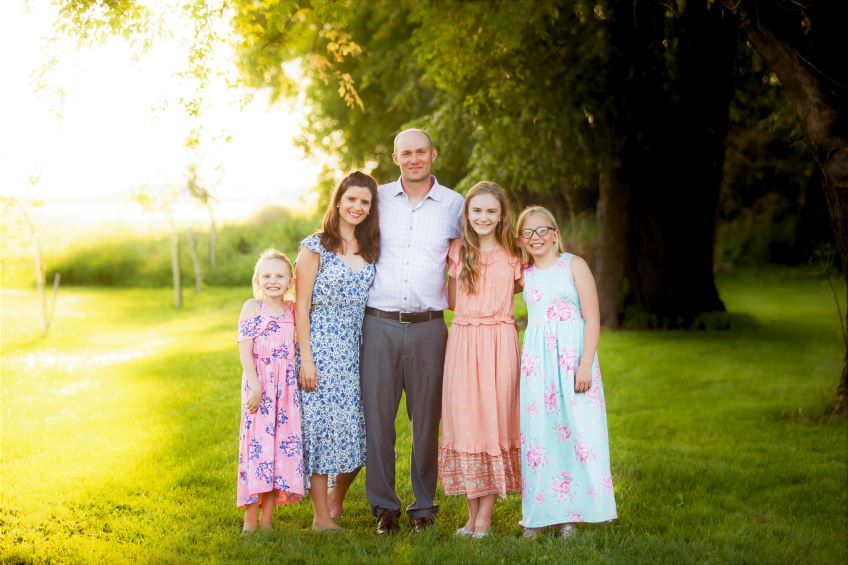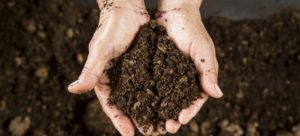
Peter Hvidsten is a fifth-generation wheat farmer from Northwest Minnesota who farms with his wife Kristen and father Tim, who is semi-retired. The main technologies he uses on his 4,000-acre (1,600-hectare) farm are GPS auto-steer and variable rate fertilizing, with reduced tillage a more recent practice.
He spoke to us about the precise cost, productivity and sustainability benefits of using the right amount of fertilizer where it’s needed and reducing tillage passes on his fields.
Peter, can you tell us more about your farm and what you grow?
I’m a fifth-generation farmer. My grandpa Olaf Hvidsten came over from southern Norway in the mid-1880s. We currently farm around 4,000 acres (1,600 hectares) and our main crop is wheat. We also grow soybeans, corn and edible beans, including navy beans, pinto beans and black beans, and this year we also had a few acres of canola. I farm with my dad, Tim who is two thirds retired. My wife, Kristen is also part of the family farm and I have three daughters, Kate, Maddy and Ella. I’m hoping that perhaps one day at least one of them would like to join the operation.
You mentioned that your farm has been in operation for five generations. Am I right in saying that you are a Minnesota ‘century farm’?
Yes, that’s correct. In 2018 we were recognized as a Minnesota ‘century farm’, which means that a farming family has owned a specific piece of land and operated it for more than 100 years. We actually have two different parcels of ‘century’ land that we have owned in our family, the first one dates back around one hundred and fifteen years. It was a great honor to receive this recognition.
Understandably – it’s an impressive achievement. Can you tell me more about the role technology plays on your farm and some of the practices that you’re using?
One of the first major technologies we adopted about 15 years ago was GPS auto-steer, which brings greater accuracy to our planting, spraying and tillage. Instead of overlapping when we’re making passes and trying to drive as straight as we can, the machine is actually doing it for us. That helps us reduce fuel costs, fertilizer costs, chemicals and the overlap, and it makes us more efficient with our time. GPS is very popular in the United States. It is fairly expensive, upwards of five to eight thousand dollars per machine to get started. But I think that cost is quickly offset by the efficiencies gained.
Another practice that we employed 13 to 14 years ago was variable rate fertilizing. This technology uses satellite lidar maps and our harvest yield maps to determine how productive different areas of our field are. Based on this information we apply a higher rate of fertilizer to our higher productive areas and a little less to our lower productive areas. This maximizes our yields on each of our acres and saves us on our inputs.
To put that in perspective, last week we soil tested a field and had a map made to apply some phosphorus for our soybean crop next year. It’s a 70-acre (28-hectare) field and the map showed us that we only needed to apply 80 pounds (just over 35 kg) of phosphorus for 16 of those 70 acres. So, we only applied our fertilizer as per our map and ended up not using around two tons (1,800 kg) of product. When you consider that phosphorus is about $750 (€645) a ton, we saved $1,500 (€1,290) right there. We were also able to, hopefully, maximize our yields next year by putting fertilizer where we need it and not where we don’t.
Can you outline how you’re achieving sustainability in your farming through the technologies that you’re using?
 One of the most important assets on our farm is the soil. We have to nourish it and keep it healthy if we are to farm productively”. And so, maximizing our fertilizer applications is one thing that will definitely help the sustainability of our soil.
One of the most important assets on our farm is the soil. We have to nourish it and keep it healthy if we are to farm productively”. And so, maximizing our fertilizer applications is one thing that will definitely help the sustainability of our soil.
We’re also trying to implement reduced tillage on our farm. If we’re able to reduce one or two passes of tillage per season, there are two key benefits. The first is that our fuel bill is going down considerably. Every tillage pass that we make uses about a half a gallon of fuel per acre. And if we eliminate two passes over 4,000 acres, that’s about 4,000 gallons (around 1,800 liters) of fuel that we’re not using, which is a huge saving.
Every tillage pass that we make, we’re also releasing carbon into the air, but reducing tillage helps to keep that carbon in the soil where in turn it helps to build organic matter, which I consider to be the engine of the soil. And so, I’m hoping that through this practice, we’re going to slowly increase our organic matter, making the soil and our farm more sustainable in the long term.
I guess I use this analogy, I don’t ever want to waste one cent of my money on any investment or any input that’s not necessary. So, like fertilizing, I don’t put more than one pound extra than I need on my soil because I don’t really need to spend my money on that. It’s a bit like cooking and using an expensive ingredient like caviar. If a recipe calls for a teaspoon of caviar and you have another three teaspoons left in your jar, are you going to throw it all in just because you want to get rid of it or because it’s easy? No, you’re going to use what’s called for, and that’s the way we look at farming.
“I’m not going to do anything more than I need to, I want to be as efficient as I can, and as sustainable as I can. And we’re looking to create the highest quality product that we can in the most efficient way. That’s how our farmers are in this area. It’s just doing things the right way and the best way possible.”


